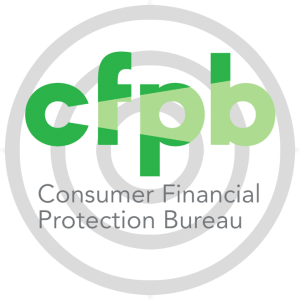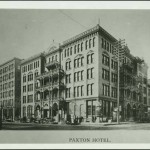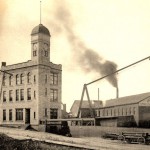Search the Blog
Categories
- Books & Reading
- Broadband Buzz
- Census
- Education & Training
- General
- Grants
- Information Resources
- Library Management
- Nebraska Center for the Book
- Nebraska Memories
- Now hiring @ your library
- Preservation
- Pretty Sweet Tech
- Programming
- Public Library Boards of Trustees
- Public Relations
- Talking Book & Braille Service (TBBS)
- Technology
- Uncategorized
- What's Up Doc / Govdocs
- Youth Services
Archives
Subscribe
Author Archives: Mary Sauers
Future Historical Collections : Archiving the 2014 Ebola Outbreak
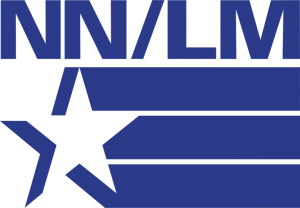 In October 2014, Marty Magee shared some informative resources about Ebola with the NCompass Blog community. That month the National Library of Medicine (NLM) began capturing and preserving born-digital content about the Ebola outbreak as they anticipated its use as primary source material for future research. The subsequent Ebola Outbreak 2014 online collection provided opportunities to compare web pages and dates. For instance, the USAID Ebola web page could be compared to one from the CDC or it could be compared to itself. What was the USAID Ebola page like on October 22, 2014 versus January 20, 2016? Or how did tweets containing #ebola from October 4, 2014 compare to those from June 20, 2015? You can see for yourself by visiting https://archive-it.org/collections/4887?fc=websiteGroup%3AEbola+Outbreak+2014 .
In October 2014, Marty Magee shared some informative resources about Ebola with the NCompass Blog community. That month the National Library of Medicine (NLM) began capturing and preserving born-digital content about the Ebola outbreak as they anticipated its use as primary source material for future research. The subsequent Ebola Outbreak 2014 online collection provided opportunities to compare web pages and dates. For instance, the USAID Ebola web page could be compared to one from the CDC or it could be compared to itself. What was the USAID Ebola page like on October 22, 2014 versus January 20, 2016? Or how did tweets containing #ebola from October 4, 2014 compare to those from June 20, 2015? You can see for yourself by visiting https://archive-it.org/collections/4887?fc=websiteGroup%3AEbola+Outbreak+2014 .
For more information about the development of the Ebola Outbreak 2014 digital collection and archiving born-digital content, check out these blog posts and lecture recordings from Christie Moffatt, Archivist & Manager of the Digital Manuscripts Program in the History of Medicine Division of the NLM:
Christie Moffatt described the reasoning and beginnings of the collection on an NLM Circulating Now post, November 19, 2014: https://circulatingnow.nlm.nih.gov/2014/11/19/future-historical-collections-archiving-the-2014-ebola-outbreak/
History of Medicine Lecture by Christie Moffatt about the development of the Ebola Web Archive, March 10, 2016: http://videocast.nih.gov/launch.asp?19543
NLM Circulating Now blog interview with Christie Moffatt about herself and her work, March 10, 2016: https://circulatingnow.nlm.nih.gov/2016/03/10/future-historical-collections-archiving-the-2014-ebola-outbreak-2/
(via Annette Parde-Maass)
A little note on the National Network of Libraries of Medicine (NN/LM) coordinators in Nebraska:
Since October 2014, Marty moved to another position at UNMC, Christian Minter was hired in Marty’s former position NN/LM, and Annette Parde-Maass was hired as Creighton University’s NN/LM Coordinator (formerly the position held by Monica Rogers).
Air Bag Inflator Recall Expanded by U.S. D.O.T
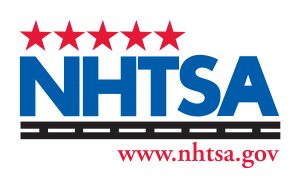 WASHINGTON, May 4, 2016 — The United States Department of Transportation’s National Highway Traffic Safety Administration is expanding and accelerating the recall of Takata air bag inflators. The decision follows the agency’s confirmation of the root cause behind the inflators’ propensity to rupture. Ruptures of the Takata inflators have been tied to ten deaths and more than 100 injuries in the United States.
WASHINGTON, May 4, 2016 — The United States Department of Transportation’s National Highway Traffic Safety Administration is expanding and accelerating the recall of Takata air bag inflators. The decision follows the agency’s confirmation of the root cause behind the inflators’ propensity to rupture. Ruptures of the Takata inflators have been tied to ten deaths and more than 100 injuries in the United States.
Under the Amended Consent Order issued to Takata this week, the company is required to make a series of safety defect decisions that will support vehicle manufacturer recall campaigns of an additional estimated 35-40 million inflators, adding to the already 28.8 million inflators previously recalled. These expansions are planned to take place in phases between May 2016 and December 2019. The expansions mean that all Takata ammonium nitrate-based propellant driver and passenger frontal air bag inflators without a chemical drying agent, also known as a desiccant, will be recalled.
“Today’s action is a significant step in the U.S. Department of Transportation’s aggressive oversight of Takata on behalf of drivers and passengers across America,” said Transportation Secretary Anthony Foxx. “The acceleration of this recall is based on scientific evidence and will protect all Americans from air bag inflators that may become unsafe.”
The five recall phases are based on prioritization of risk, determined by the age of the inflators and exposure to high humidity and fluctuating high temperatures that accelerate the degradation of the chemical propellant.
“NHTSA’s aggressive actions in 2015 means this recall is already a year ahead of where it would have been if the agency had waited for this research,” said NHTSA Administrator Mark Rosekind. “As a result, all of the most dangerous inflators responsible for the deaths and injuries are already under recall.”
NHTSA and its independent expert reviewed the findings of three independent investigations into the Takata air bag ruptures and confirmed the findings on the root cause of inflator ruptures. A combination of time, environmental moisture and fluctuating high temperatures contribute to the degradation of the ammonium nitrate propellant in the inflators. Such degradation can cause the propellant to burn too quickly, rupturing the inflator module and sending shrapnel through the air bag and into the vehicle occupants.
“The science clearly shows that these inflators become unsafe over time, faster when exposed to humidity and variations of temperature,” Rosekind added. “This recall schedule ensures the inflators will be recalled and replaced before they become dangerous, giving vehicle owners sufficient time to have them replaced before they pose a danger to vehicle occupants. NHTSA will continue to evaluate all available research and will act quickly to protect safety.”
NHTSA will also consult with affected vehicle manufacturers before revising the Coordinated Remedy Order that governs the accelerated program to obtain and install replacement inflators. The Coordinated Remedy Program will continue to ensure that replacement inflators will be made available to highest-risk vehicles first. The revised Coordinated Remedy Program, to be announced this summer, will detail the updated vehicle prioritization schedule and the schedule by which manufacturers are required to procure sufficient supply of replacement parts to conduct the required recall repairs.
This is the largest and most complex safety recall in U.S. history. Under the Coordinated Remedy Program, NHTSA and manufacturers have committed to seek a 100 percent recall completion rate.
“Everyone plays a role in making sure that this recall is completed quickly and safely, including manufacturers, suppliers and vehicle owners themselves,” Rosekind said. “People who receive notification that there is a remedy available for their vehicle should act immediately to have their inflator fixed. All vehicle owners should regularly check SaferCar.gov for information about any open safety recall on their vehicle and what they can do to have it fixed free of charge.”
The recall expansion does not include inflators that include a chemical desiccant that absorbs moisture. There have been no reported ruptures of the desiccated inflators due to propellant degradation. Under the Amended Consent Order, Takata is required to redirect its research toward the safety of the desiccated inflators. Absent proof that the desiccated inflators are safe, Takata will be required to recall them under the November 2015 Consent Order.
In 2015, NHTSA imposed the largest civil penalty in its history for Takata’s violations of the Motor Vehicle Safety Act, and for the first time used its authority to accelerate recall repairs to millions of affected vehicles. NHTSA also appointed an Independent Monitor to assess, track and report the company’s compliance with the Consent Order and to oversee the Coordinated Remedy Program.
Consumers can find complete information about the Takata air bag inflator recall here.
- May 2016 amendment to Takata consent order
- NHTSA expert report on the root cause of Takata inflator ruptures
- Fact Sheet: May 2016 Takata Recall Expansion
- Fact Sheet: NHTSA Actions to Accelerate the Takata Remedy
- Fact Sheet: Takata Recall History and Key Terms
Stay connected with NHTSA: Search for open recalls with VIN look up | Download the Safercar Mobile App for Apple or Android devices | Receive recall alerts by email | Visit us on Facebook.com/NHTSA | Follow us on Twitter.com/NHTSAgov | Watch 5-Star Safety Ratings crash tests on YouTube.com/USDOTNHTSA | SaferCar.gov
Reprinted from NHTSA (National Highway Traffic Safety Administration).
New Nebraska State Agency Publications
New Nebraska State Agency publications have been received at the Nebraska Library Commission for April 2016. Included are Annual and Audit reports, reports from the Nebraska Arts Council, the Department of Education, the Department of Environmental Quality, the Nebraska Foster Care Review Office, and new titles from the University of Nebraska Press, to name a few.
have been received at the Nebraska Library Commission for April 2016. Included are Annual and Audit reports, reports from the Nebraska Arts Council, the Department of Education, the Department of Environmental Quality, the Nebraska Foster Care Review Office, and new titles from the University of Nebraska Press, to name a few.
Posted in What's Up Doc / Govdocs
Leave a comment
Download 67,000 Historic Maps
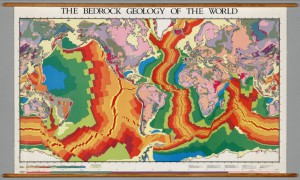 If you love looking at maps as much as I do, you and your patrons will really enjoy the website I’m sharing with you today. Please read on…
If you love looking at maps as much as I do, you and your patrons will really enjoy the website I’m sharing with you today. Please read on…
Stanford University is excited to announce the arrival of the David Rumsey Map Center in April. While these kinds of university improvements are rarely of much interest to the general public, this one highlights a collection worth giving full attention. Well, for those of us, that is, who love maps.
You do not need to be a Stanford student or faculty or staff member to access the vast treasures of the Rumsey Map collection, nor do you need to visit the university or its new Center. Since 1996, the Rumsey collection’s online database has been open to all, currently offering anyone with an internet connection access to 67,000 maps from all over the globe, spanning five centuries of cartography. Rumsey’s holdings constitute, writes Wired, “the dopest map collection on Earth,” and though its physical housing at Stanford is a huge boon to academic researchers, its online archive is yours for the browsing, searching, and downloading, whoever and wherever you are.
Pages like the 1867 map “Twelve Perspectives on the Earth in Orbit and Rotation,” contains detailed publication information, the ability to zoom in and examine the tiniest details, and an “export” function allowing users to download a variety of resolutions up to 12288 pixels. (The same holds true for all other maps.) There’s also a new feature for many maps called “Georeferencing” (see a short introductory video here), which matches the map’s contours with other historic maps or with more accurate, modern satellite images.
In the case of “Twelve Perspectives on the Earth in Orbit and Rotation,” the georeferencing function returns an error message stating “this is not a map.” But in terrestrial images, like the topographical map of the Yosemite Valley above, we can choose specific portions to georeference, use the “visualize” function to see how they match up to contemporary views, and conduct an accuracy analysis. (Georeferencing requires sign-in with a free account, or you can use your Google, Facebook, or Twitter log-ins.) Georeferencing is not available for all maps, yet. You can help the Rumsey collection expand the feature by visiting this page and clicking the “Random Map” link.
The Rumsey Collection contains a seemingly inexhaustible supply of cartographic images, such as the colorful aerial view of New York City from 1900, above, and the 1949 composite map of the Soviet Union, at the top of the post. In addition to the maps themselves—most works of art in their own right—the database is full of other beautiful images related to geography, such as the fabulous, full-color title page below for the 1730 Atlas Novus sive Tabulae Geographicae by Matthaeus Seutter.
David Rumsey—currently President of the digital publishing company Cartography Associates—began collecting maps and “related cartographic materials” in 1980. Since then, his physical collection has grown to include over 150,000 maps, to be housed at the Stanford Center that bears his name, and he has received several awards for making his collection available online. The cartography enthusiasts among us, and the hardcore scholars, can likely look forward to many more maps appearing in the web archive. For now, there’s no shortage of fascinating material.
On the site’s homepage, they highlight these areas worth exploring:
The historical map collection has over 67,000 maps and images online. The collection includes rare 16th through 21st century maps of America, North America, South America, Europe, Asia, Africa, Pacific, and the World.
Popular collection categories are celestial, antique atlas, globe, school geography, maritime chart, state, county, city, pocket, wall & case, children’s, and manuscript maps. Search examples: Pictorial maps, United States maps, Geology maps, California map, Afghanistan map, America map, New York City map, Chicago map, and U.S. Civil War maps. Browse map categories: What, Where, Who, When. The collection is used to study history, art, genealogy, explorations, and family history.
Enjoy!
Reprinted from Open Culture : the best free cultural & educational media on the web, April 20th, 2016.
USDA Seeks Applications for Nearly $12 Million in Broadband Grants for Rural Communities
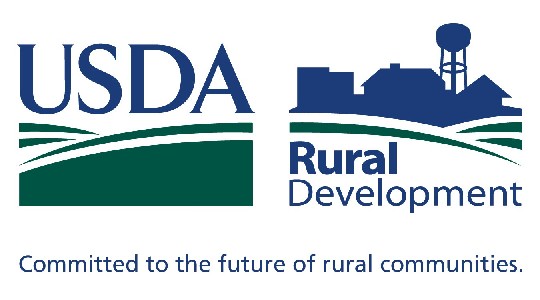
Agriculture Secretary Tom Vilsack has announced that USDA is soliciting applications for grants to establish broadband in unserved rural communities through its Community Connect program. Community Connect is administered by USDA’s Rural Utilities Service and helps to fund broadband deployment into rural communities where it is not economically viable for private sector providers to provide service.
“Through Community Connect and our other telecommunications programs, USDA helps to ensure that rural residents have access to broadband to run businesses, get the most from their education and benefit from the infinite services that fast, reliable broadband provides,” Vilsack said. “USDA is committed to supporting America’s rural communities through targeted investments in our bioeconomy and renewable energy, local and regional food systems, conservation initiatives and rural development.”
USDA plans to award up to $11.7 million in grants through the Community Connect grant program. The grants fund broadband infrastructure to help foster economic growth by delivering connectivity to the global marketplace. The grants also fund broadband for community centers and public institutions.
USDA has invested $160 million in more than 240 projects to bring broadband to unserved rural communities since the Community Connect Program was created in 2002.
In 2009, the Wichita Online telecommunications company in Cooperton, Okla., received a Community Connect grant to build a community center with computers. The center serves as an Internet library for local residents and is used by several government agencies. The sheriff’s office and volunteer fire department coordinate their public safety, fire protection and other emergency services from the center. During harvest season, many farmworkers use the computers to communicate with their family members far away. Cooperton is a farming and ranching community between the Slick Hills and Wichita Mountains in Southwest Oklahoma.
The minimum grant is $100,000 for FY 2016. The maximum award is $3 million. USDA announced new rules in 2013 to better target Community Connect grants to areas where they are needed the most. To view the rules, go to http://www.rd.usda.gov/programs-services/community-connect-grants
Prior Community Connect grants cannot be renewed. However, existing Community Connect awardees may submit applications for new projects, which USDA will evaluate as new applications
This Community Connect round builds on USDA’s historic investments in rural America over the past seven years. Since 2009, USDA has worked to strengthen and support rural communities and American agriculture, an industry that supports one in 11 American jobs, provides American consumers with more than 80 percent of the food we consume, ensures that Americans spend less of their paychecks at the grocery store than most people in other countries, and supports markets for homegrown renewable energy and materials. USDA has provided $5.6 billion of disaster relief to farmers and ranchers; expanded risk management tools with products like to Whole Farm Revenue Protection; helped farm businesses grow with $36 billion in farm credit; provided $4.32 billion in critical agricultural research; established innovative public-private conservation partnerships such as the Regional Conservation Partnership Program; developed new markets for rural-made products, including more than 2,500 biobased products through USDA’s BioPreferred program; and invested $64 billion in infrastructure, housing and community facilities to help improve quality of life in rural America.
Since 2009, USDA Rural Development (#USDARD ) has invested $11 billion to start or expand 103,000 rural businesses; helped 1.1 million rural residents buy homes; funded nearly 7,000 community facilities such as schools, public safety and health care facilities; financed 180,000 miles of electric transmission and distribution lines; and helped bring high-speed Internet access to nearly 6 million rural residents and businesses. For more information, visit www.usda.gov/results.
) has invested $11 billion to start or expand 103,000 rural businesses; helped 1.1 million rural residents buy homes; funded nearly 7,000 community facilities such as schools, public safety and health care facilities; financed 180,000 miles of electric transmission and distribution lines; and helped bring high-speed Internet access to nearly 6 million rural residents and businesses. For more information, visit www.usda.gov/results.
Friday Reads : The House Girl

From Amazon:
“The House Girl, the historical fiction debut by Tara Conklin, is an unforgettable story of love, history, and a search for justice, set in modern-day New York and 1852 Virginia.?
Conklin’s use of alternating chapters weaves together “the story of an escaped slave in pre–Civil War Virginia, and a determined junior lawyer in present-day New York City. The House Girl follows Lina Sparrow as she looks for an appropriate lead plaintiff in a lawsuit seeking compensation for families of slaves. In her research, she learns about Lu Anne Bell, a renowned prewar artist whose famous works might have actually been painted by her slave, Josephine.” While retracing Josephine’s often-elusive path, she also uncovers some troubling facts about her own life and parents, and the startling lie that formed the basis of her childhood and young adulthood.
I started listening to The House Girl on audio, then was so caught up by the story, that I checked out the book from Lincoln City Libraries. Definitely a good read!
Posted in Books & Reading, General, Information Resources, Programming, Uncategorized
Tagged Friday Reads
Leave a comment
IRS Warns of Continued Scams as the Tax Deadline Nears
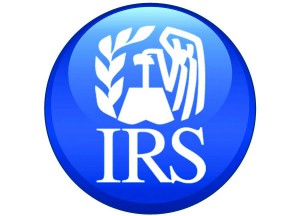 The Internal Revenue Service issued a warning yesterday that scammers may try using the April 18 tax deadline to prey on hard-working taxpayers by impersonating the IRS and others with fake phone calls and emails. Even after the tax deadline passes, taxpayers should know the telltale signs of a scam and tips to protect themselves from a variety of phone scams and phishing emails.
The Internal Revenue Service issued a warning yesterday that scammers may try using the April 18 tax deadline to prey on hard-working taxpayers by impersonating the IRS and others with fake phone calls and emails. Even after the tax deadline passes, taxpayers should know the telltale signs of a scam and tips to protect themselves from a variety of phone scams and phishing emails.
“We’ve seen continuing activity in these scams throughout the filing season,” said IRS Commissioner John Koskinen. “As the tax deadline nears, these criminals may try and trick honest taxpayers over the phone or via email, and people should remain vigilant. After the tax deadline, watch out for these scammers promising a refund or threatening you with an unexpected tax bill.”
These scam artists frequently masquerade as being from the IRS, a tax company and sometimes even a state revenue department. By email, they try enticing people to click on links on official-looking messages containing questions related to their tax refund. Report these emails to phishing@irs.gov. By phone, many scammers use threats to intimidate and bully people into paying a tax bill. They may even threaten to arrest, deport or revoke the driver’s license of their victim if they don’t get the money.
Variations of these scams can be seen nationwide, and it’s more important than ever to be cautious with providing personal or financial information. As part of the effort to protect taxpayers, the IRS has teamed up with state revenue departments and the tax industry to make sure taxpayers understand the dangers to their personal and financial data as part of the “Taxes. Security.Together” campaign. Some examples of the varied tactics seen this year are:
- Soliciting W-2 information from payroll and human resources professionals–IR-2016-34
- “Verifying” tax return information over the phone–IR-2016-40
- Pretending to be from the tax preparation industry–IR-2016-28
There are some important reminders for taxpayers nationwide about these schemes:
Watch Out for Threatening Phone Calls
Beware of scammers making unsolicited calls claiming to be IRS officials. They demand that the victim pay a bogus tax bill. They con the victim into sending cash, usually through a prepaid debit card or wire transfer. They may also leave “urgent” callback requests through phone “robo-calls,” or via a phishing email.
Scammers often alter caller ID numbers to make it look like the IRS or another agency is calling. The callers use IRS titles and fake badge numbers to appear legitimate. They may use the victim’s name, address and other personal information to make the call sound official.
The IRS Will Never:
- Call to demand immediate payment over the phone, nor will the agency call about taxes owed without first having mailed you a bill.
- Threaten to immediately bring in local police or other law-enforcement groups to have you arrested for not paying.
- Demand that you pay taxes without giving you the opportunity to question or appeal the amount they say you owe.
- Require you to use a specific payment method for your taxes, such as a prepaid debit card.
- Ask for credit or debit card numbers over the phone.
If you get a phone call from someone claiming to be from the IRS and asking for money and you don’t owe taxes, here’s what you should do:
- Do not give out any information. Hang up immediately.
- Contact TIGTA to report the call. Use their “IRS Impersonation Scam Reporting” web page or call 800-366-4484.
- Report it to the Federal Trade Commission. Use the “FTC Complaint Assistant” on FTC.gov. Please add “IRS Telephone Scam” in the notes.
- If you think you might owe taxes, call the IRS directly at 1-800-829-1040.
Avoid e-mail phishing attempts
There has been a surge in e-mail scams this year that appear to be from a tax agency or a tax software company.
Never reply to emails, texts or pop-up messages asking for your personal, tax or financial information. One common trick by criminals is to impersonate a business such as your financial institution, tax software provider or the IRS, asking you to update your account and providing a link. For small business, these schemes may try impersonating a company leader and request payroll and human resource information for employees in your company. Never click on links even if they seem to be from organizations you trust. Go directly to the organization’s website.
And if it sounds too good to be true, it probably is. If you see an email that says ‘You won a free cruise’ or ‘The IRS has a refund waiting for you,’ odds are high that it is a phishing attempt looking to get your personal information.
If you get a ‘phishing’ email, remember this important advice:
- Don’t reply to the message.
- Don’t give out your personal or financial information.
- Forward the email to phishing@irs.gov. Then delete it.
- Don’t open any attachments or click on any links. They may have malicious code that will infect your computer.
More information on how to report phishing or phone scams is available on IRS.gov.
Additional IRS Resources:
- www.irs.gov/identitytheft
- Fact Sheet 2016-1, IRS, States and Tax Industry Combat Identity Theft and Refund Fraud on Many Fronts
- Fact Sheet 2016-2, IRS, States and Tax Industry Urge Taxpayers to Join the Effort to Combat Identity Theft
- Fact Sheet 2016-3, IRS Identity Theft Victim Assistance: How It Works
- Fact Sheet 2016-4, How New Identity Security Changes May Affect Taxpayers for 2016
New Nebraska State Agency Publications
 New Nebraska State Agency publications have been received at the Nebraska Library Commission for March 2016. Included are Annual and Audit reports, publications from the Department of Economic Development, the Department of Roads, Nebraska Public Power District, the Nebraska Legislature, and new titles from the University of Nebraska Press, to name a few.
New Nebraska State Agency publications have been received at the Nebraska Library Commission for March 2016. Included are Annual and Audit reports, publications from the Department of Economic Development, the Department of Roads, Nebraska Public Power District, the Nebraska Legislature, and new titles from the University of Nebraska Press, to name a few.
Resources for Financial Literacy Month
April is Financial Literacy Month – a great time to think about money programs and displays. And, the last week of April is Money Smart Week, a national financial education recognition week. Here are some things you can consider as we head into this big money month:
Webinar: CFPB: Partnering with Libraries to Financially Empower Patrons
The CFPB has two webinars planned for later this month. The first will be hosted by the U.S. Government Printing Office’s Federal Depository Library Program. The CFPB will be providing an overview of our Community Financial Education Libraries Initiative. If you’re new to this program, or just want a refresher on what the program offers and how to access the free resources we provide, then register today.
The 60-minute webinar will begin at 2 p.m. (EDT) on March 23. The webinar is free, but you must register.
Webinar: Financial education resources for parents
The second webinar will focus on new resources we’ve developed just for parents and children. Parents and caregivers want to get their children off on the right financial footing, but many times don’t know where to start. So, we’re introducing the CFPB’s new Money as You Grow website, which provides the framework and resources to help.
This 60-minute webinar will start at 2 p.m. (EDT) on March 24. To join, access the webinar login page at the day and time of the event. For audio, dial 888-795-5920 and enter participant passcode 7173562.
Order free money books, brochures, worksheets and more
Now’s the time to place your orders for free money guides, worksheets and other materials from the CFPB and other government agencies like the Federal Trade Commission, Securities and Exchange Commission, Social Security Administration, Department of Labor and others.
Plus, if you’re hosting a Money Smart Week event at your library, you can order free posters, bookmarks and more.
Need money related program ideas?
Stumped over what to do for Financial Literacy Month or Money Smart Week? Take a look at our list of program ideas for suggestions on topics, resources, partners and more.
Our webinar archive can also help you generate ideas. We have more than a dozen to choose from, including:
• Retirement planning tools and resources
• Helping patrons spot and avoid fraud
• New home-buyers (and owners) toolbox
• How to promote your financial education program
National my Social Security Week
One of our national partners, Social Security Administration (SSA) will hold National my Social Security Week April 4 – 13, 2016, during Financial Literacy Month.
To help raise awareness, SSA provides a toolkit that includes web graphics, social media posts, web banners, and other ready-to-use content to help us spread the word about the importance of opening a my Social Security account.
Creating a my Social Security account gives workers access to their personalized Social Security Statement. It’s free, fast, and secure. The Statement provides estimates of future benefits to help with financial planning. Workers can also use it to check their earnings information. This is important because we base benefit calculations on a worker’s earnings.
As an added feature this year, we are setting aside Thursday, April 7, 2016 as Check Your Statement Day, during which time we will encourage workers to access and review their Social Security Statement and join the millions who regularly check their Statement.
Digital resources
Promote financial education digitally with our free electronic graphics and marketing materials. Add financial screen savers to your computers or web banners to your website. Plus, access the CFPB’s Facebook, Twitter, and YouTube pages to share our posts, info-graphics and videos with your patrons, like this video from CFPB Director Richard Cordray.
New Nebraska State Agency Publications
 New Nebraska State Agency publications have been received at the Nebraska Library Commission for February 2016. Included are Annual and Audit reports, publications from the Department of Natural Resources, Local Emergency Operations Plans from various Nebraska counties, reports from the Nebraska Legislature, and new titles from the University of Nebraska Press, to name a few.
New Nebraska State Agency publications have been received at the Nebraska Library Commission for February 2016. Included are Annual and Audit reports, publications from the Department of Natural Resources, Local Emergency Operations Plans from various Nebraska counties, reports from the Nebraska Legislature, and new titles from the University of Nebraska Press, to name a few.
Nourish Strong Partnerships to Foster Health Education
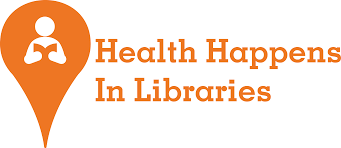 The Health Happens in Libraries team has posted a new article to support libraries as you Nourish Strong Partnerships to Foster Health Education. The article includes two key resources to amplify your efforts:
The Health Happens in Libraries team has posted a new article to support libraries as you Nourish Strong Partnerships to Foster Health Education. The article includes two key resources to amplify your efforts:
Supporting Healthy Communities through Health Information and Services is a free resource to guide library staff in identifying local community health priorities and finding the right partners to address those priorities. The guide emphasizes strategies to access community data, make contact with other community organizations, and serve children, families and your community at large with a focus on health. The PDF guide can be downloaded here.
In addition, the Developing Health Literacy through Health Information and Services guide provides further inspiration on promoting health literacy in your community. It highlights many freely available health literacy resources for you and your library’s patrons to access at any time. This PDF guide is available for download here.
Both guides include individual and team reflection questions to help you take action on the information in a local context.
Please-take a look! Print a copy, share with your colleagues and post your ideas for using these resources to social media with the hashtag #libs4health. (If this request looks familiar, it is! :-))
Thanks for all you do to contribute to the vitality of your communities.
(Reprinted from OCLC WebJunction, Thursday, February 25, 2016)
Free Webinar–“Grants.gov : Register, Find, Apply”
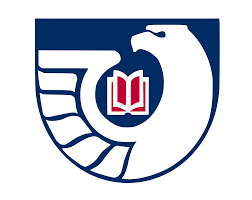 A live training webinar, “Grants.gov: Register, Find, and Apply” will be presented on Thursday, March 17, 2016.
A live training webinar, “Grants.gov: Register, Find, and Apply” will be presented on Thursday, March 17, 2016.
Register today for “Grants.gov: Register, Find, and Apply”
-
Start time: 2:00 p.m. (Eastern)
Duration: 60 minutes
Speaker: Judy Ceresa, Program Advisor, Grants.gov Program Management Office
Learning outcomes: Participants will learn how to register in order to submit Federal grant applications and how to use the Federal Grants.gov system to find and apply for grant funding.
Expected level of knowledge for participants: No prerequisite knowledge required
The webinar is free, however registration is required. Upon registering, a confirmation email will be sent to you. This registration confirmation email includes the instructions for joining the webinar.
Registration confirmations will be sent from sqldba @ icohere.com. To ensure delivery of registration confirmations, registrants should configure junk mail or spam filter(s) to permit messages from that email address. If you do not receive the confirmation, please notify GPO.
GPO’s eLearning platform presents webinars using WebEx. In order to attend or present at a GPO-hosted webinar, a WebEx plug-in must be installed in your internet browser(s). Download instructions.
Visit FDLP Academy for access to FDLP educational and training resources. All are encouraged to share and re-post information about this free training opportunity.
IRS Phone Scams Are A Serious Threat
 Aggressive and threatening phone calls by criminals impersonating IRS agents remain a major threat to taxpayers, headlining the annual “Dirty Dozen” list of tax scams for the 2016 filing season, the Internal Revenue Service announced today.
Aggressive and threatening phone calls by criminals impersonating IRS agents remain a major threat to taxpayers, headlining the annual “Dirty Dozen” list of tax scams for the 2016 filing season, the Internal Revenue Service announced today.
The IRS has seen a surge of these phone scams as scam artists threaten police arrest, deportation, license revocation and other things. The IRS reminds taxpayers to guard against all sorts of con games that arise during any filing season.
“Taxpayers across the nation face a deluge of these aggressive phone scams. Don’t be fooled by callers pretending to be from the IRS in an attempt to steal your money,” said IRS Commissioner John Koskinen. “We continue to say if you are surprised to be hearing from us, then you’re not hearing from us.”
“There are many variations. The caller may threaten you with arrest or court action to trick you into making a payment,” Koskinen added. “Some schemes may say you’re entitled to a huge refund. These all add up to trouble. Some simple tips can help protect you.”
The Dirty Dozen is compiled annually by the IRS and lists a variety of common scams taxpayers may encounter any time during the year. Many of these con games peak during filing season as people prepare their tax returns or hire someone to do so.
This January, the Treasury Inspector General for Tax Administration (TIGTA) announced they have received reports of roughly 896,000 contacts since October 2013 and have become aware of over 5,000 victims who have collectively paid over $26.5 million as a result of the scam.
“The IRS continues working to warn taxpayers about phone scams and other schemes,” Koskinen said. “We especially want to thank the law-enforcement community, tax professionals, consumer advocates, the states, other government agencies and particularly the Treasury Inspector General for Tax Administration for helping us in this battle against these persistent phone scams.”
Protect Yourself
Scammers make unsolicited calls claiming to be IRS officials. They demand that the victim pay a bogus tax bill. They con the victim into sending cash, usually through a prepaid debit card or wire transfer. They may also leave “urgent” callback requests through phone “robo-calls,” or via a phishing email.
Many phone scams use threats to intimidate and bully a victim into paying. They may even threaten to arrest, deport or revoke the license of their victim if they don’t get the money.
Scammers often alter caller ID numbers to make it look like the IRS or another agency is calling. The callers use IRS titles and fake badge numbers to appear legitimate. They may use the victim’s name, address and other personal information to make the call sound official.
Here are five things the scammers often do but the IRS will not do. Any one of these five things is a tell-tale sign of a scam.
The IRS will never:
- Call to demand immediate payment, nor will the agency call about taxes owed without first having mailed you a bill.
- Demand that you pay taxes without giving you the opportunity to question or appeal the amount they say you owe.
- Require you to use a specific payment method for your taxes, such as a prepaid debit card.
- Ask for credit or debit card numbers over the phone.
- Threaten to bring in local police or other law-enforcement groups to have you arrested for not paying.
If you get a phone call from someone claiming to be from the IRS and asking for money, here’s what you should do:
If you don’t owe taxes, or have no reason to think that you do:
- Do not give out any information. Hang up immediately.
- Contact TIGTA to report the call. Use their “IRS Impersonation Scam Reporting” web page. You can also call 800-366-4484.
- Report it to the Federal Trade Commission. Use the “FTC Complaint Assistant” on FTC.gov. Please add “IRS Telephone Scam” in the notes.
If you know you owe, or think you may owe tax:
- Call the IRS at 800-829-1040. IRS workers can help you.
Stay alert to scams that use the IRS as a lure. Tax scams can happen any time of year, not just at tax time. For more, visit “Tax Scams and Consumer Alerts” on IRS.gov.
Each and every taxpayer has a set of fundamental rights they should be aware of when dealing with the IRS. These are your Taxpayer Bill of Rights. Explore your rights and our obligations to protect them on IRS.gov.
Important Information for Nebraska 2016 Presidential Elections
 With the Presidential Caucuses, Primaries, and General Election coming up, here are important dates to remember:
With the Presidential Caucuses, Primaries, and General Election coming up, here are important dates to remember:
The 2016 Nebraska Democratic Caucus is on Saturday, March 5th, 2016.
The 2016 Nebraska Republican Primary is on Tuesday, May 10th, 2016.
The 2016 Nebraska General Election is on Tuesday November 8th, 2016.
Any person who is eligible to vote in the State of Nebraska and will be at least 18 years old on Election Day, November 8, 2016, may participate in the Nebraska Democratic Caucus on March 5th, 2016, or the Nebraska Republican Primary on May 10th, 2016.
2016 Nebraska Caucus
The Democratic Caucus will take place on Saturday, March 5th, 2016 from 10:00 a.m-8:00 p.m. CST, and 9:00 a.m.-7:00 p.m. MST. All 93 counties will have Caucus sites this year. Each County will set the time of their Caucus!
2016 Nebraska Primary
The Republican Primary will take place on Tuesday, May 10th, 2016 from 8:00 a.m-8:00 p.m. CST, and 7:00 a.m.-7:00 p.m. MST.
CLICK HERE TO FIND YOUR PRECINCT (ALL VOTERS)
CLICK HERE TO VIEW YOUR DEMOCRATIC CAUCUS VOTING LOCATION
CLICK HERE TO VIEW YOUR REPUBLICAN PRIMARY VOTING LOCATION
New Nebraska State Agency Publications
 New Nebraska State Agency publications have been received at the Nebraska Library Commission for January 2016. Included are Annual and Audit reports, Economic Development reports, Summer Reading programs for Libraries, and new titles from the University of Nebraska Press, to name a few.
New Nebraska State Agency publications have been received at the Nebraska Library Commission for January 2016. Included are Annual and Audit reports, Economic Development reports, Summer Reading programs for Libraries, and new titles from the University of Nebraska Press, to name a few.
Nebraska Memories: The Paxton & Gallagher Legacy
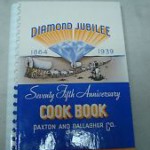 This week we received, as a gift, a copy of the Paxton & Gallagher 75th Anniversary Diamond Jubilee Cookbook, 1864-1939. It has been wonderful to leaf through the recipes and handwritten notes, and wonder about the company who produced them, as well as the many cooks who used them.
This week we received, as a gift, a copy of the Paxton & Gallagher 75th Anniversary Diamond Jubilee Cookbook, 1864-1939. It has been wonderful to leaf through the recipes and handwritten notes, and wonder about the company who produced them, as well as the many cooks who used them.
As it turns out, there are several pictures related to Paxton & Gallagher in Nebraska Memories, so here is a brief history of the company and its’ founders:
Paxton & Gallagher Wholesale Grocery was founded in 1879 by two Omaha businessmen: Ben Gallagher and William A. Paxton, and in a few short years became one of the largest grocery companies in the West. Paxton started out as a cattleman, then became a banker who had his hand in many different businesses in Omaha and Nebraska. Examples of Nebraska Memories pictures of some of his ventures are, from left to right: The Paxton Hotel, the Paxton & Vierling Iron Works, and the Nebraska Telephone Company (in which Paxton was a principal stockholder).
Gallagher, on the other hand, was a grocery man only, and previously operated a series of general stores all along the Union Pacific railroad route.
The original Paxton & Gallagher store was located at 15th and 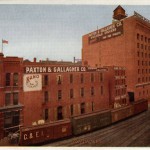 Farnam Street in downtown Omaha, but later moved to a four story complex at 701-711 S. 10th Street.
Farnam Street in downtown Omaha, but later moved to a four story complex at 701-711 S. 10th Street.
Paxton & Gallagher hit it big when they launched their Butter-Nut line of foods, and especially after 1913 when they began selling Butter-Nut brand coffee, a name that many people remember, and is still around today.
Visit Nebraska Memories to search for or browse through many more historical images digitized from photographs, negatives, postcards, maps, lantern slides, books and other materials.
Nebraska Memories is a cooperative project to digitize Nebraska-related historical and cultural heritage materials and make them available to researchers of all ages via the Internet. Nebraska Memories is brought to you by the Nebraska Library Commission. If your institution is interested in participating in Nebraska Memories, see Participating in Nebraska Memories for more information, or contact Devra Dragos, Technology & Access Services Director.
Posted in Nebraska Memories
27 Comments
Friday Reads: The Last Midwife
 Sandra Dallas is one of my favorite authors, and The Last Midwife does not disappoint.
Sandra Dallas is one of my favorite authors, and The Last Midwife does not disappoint.
From Amazon:
“It is 1880 and Gracy Brookens is the only midwife in a small Colorado mining town where she has delivered hundreds, maybe thousands, of babies in her lifetime. The women of Swandyke trust and depend on Gracy, and most couldn’t imagine getting through pregnancy and labor without her by their sides.
But everything changes when a baby is found dead…and the evidence points to Gracy as the murderer.
She didn’t commit the crime, but clearing her name isn’t so easy when her innocence is not quite as simple, either. She knows things, and that’s dangerous. Invited into her neighbors’ homes during their most intimate and vulnerable times, she can’t help what she sees and hears. A woman sometimes says things in the birthing bed, when life and death seem suspended within the same moment. Gracy has always tucked those revelations away, even the confessions that have cast shadows on her heart.
With her friends taking sides and a trial looming, Gracy must decide whether it’s worth risking everything to prove her innocence. And she knows that her years of discretion may simply demand too high a price now…especially since she’s been keeping more than a few dark secrets of her own.
With Sandra Dallas’s incomparable gift for creating a sense of time and place and characters that capture your heart, The Last Midwife tells the story of family, community, and the secrets that can destroy and unite them.”
Posted in Books & Reading, General, Information Resources, Uncategorized
Tagged Friday Reads
Leave a comment
Free Webinar: The National Agricultural Library: Agricultural Information for the 21st Century
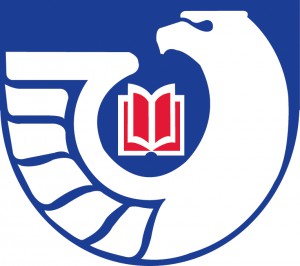 A live training webinar, “The National Agricultural Library: Agricultural Information for the 21st Century,” will be presented on Tuesday, February 16, 2016.
A live training webinar, “The National Agricultural Library: Agricultural Information for the 21st Century,” will be presented on Tuesday, February 16, 2016.
Register today for “The National Agricultural Library: Agricultural Information for the 21st Century”.
Start time: 2:00 p.m. (Eastern)
Duration: 60 minutes
Speaker: Chris Cole is the Acting Associate Director for Information Products and the Manager of Business Development at the National Agricultural Library (NAL). As the Associate Director, he manages the customer facing activities of the library including the information centers and reference operations. As the Manager of Business development, he manages the grant seeking operations of NAL and the development of partnerships with public and private sector groups to digitize collections and develop new services.
Learning outcomes: This webinar describes the history and customers of the NAL. It will include an in-depth description of NAL’s current services, information products, and tools. Participants will learn about the information resources and tools freely available to them via the web. These include the PubAG repository of agricultural research articles, the AGRICOLA periodical index, the specialty Information Centers, and information tools such as the NAL thesaurus.
Expected level of knowledge for participants: No prerequisite knowledge required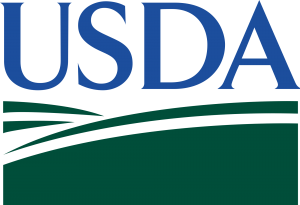
The webinar is free, however registration is required. Upon registering, a confirmation email will be sent to you. This registration confirmation email includes the instructions for joining the webinar.
Registration confirmations will be sent from sqldba@icohere.com. To ensure delivery of registration confirmations, registrants should configure junk mail or spam filter(s) to permit messages from that email address. If you do not receive the confirmation, please notify GPO.
GPO’s eLearning platform presents webinars using WebEx. In order to attend or present at a GPO-hosted webinar, a WebEx plug-in must be installed in your internet browser(s). Download instructions.
Visit FDLP Academy for access to FDLP educational and training resources. All are encouraged to share and re-post information about this free training opportunity.
Posted in General, What's Up Doc / Govdocs
Leave a comment
2015 State Agency Publications Received at the Library Commission
 Nebraska State Government Publications 2015 is a listing of the new state publications received in 2015 by the Nebraska Publications Clearinghouse, a service of the Nebraska Library Commission. It is a compilation of the state publications listed in What’s Up Doc?, the Clearinghouse’s blog. They are arranged in two separate lists: by broad subject categories and alphabetically by title. All of the publications listed here are available for loan from the Library Commission by calling 1-800-307-2665 and asking for the Reference desk (outside Nebraska and in Lincoln call 402-471-4016). Users wishing to obtain their own copies must request them directly from the issuing agency.
Nebraska State Government Publications 2015 is a listing of the new state publications received in 2015 by the Nebraska Publications Clearinghouse, a service of the Nebraska Library Commission. It is a compilation of the state publications listed in What’s Up Doc?, the Clearinghouse’s blog. They are arranged in two separate lists: by broad subject categories and alphabetically by title. All of the publications listed here are available for loan from the Library Commission by calling 1-800-307-2665 and asking for the Reference desk (outside Nebraska and in Lincoln call 402-471-4016). Users wishing to obtain their own copies must request them directly from the issuing agency.
The majority of items have been cataloged and the OCLC number listed. They can be searched in the Library Commission’s Online catalog.
Many publications are also available in other formats. Microfiche copies of documents published prior to 2006 may be available at the State Depository Libraries.
State Publications Online, a Clearinghouse web page, lists publications in electronic format.
This list, along with issues of What’s Up Doc?, and annual lists from previous years are also available online.
For additional copies of this publication please contact:
Mary Sauers | Government & Information Services Librarian | Nebraska Library Commission | 402-471-4017 | Mary.sauers@nebraska.gov
Free Webinar on Rural Health Resources
 Discover National Library of Medicine Resources and More: Rural Health
Discover National Library of Medicine Resources and More: Rural Health
Wednesday, January 27, 2016 – 1 PM MT/2 PM CT
Join us at https://webmeeting.nih.gov/mcr2
Residents of rural communities, both consumers and health professionals, face challenges when seeking access to health information. Yes—people in rural communities are part of the underserved population too. This webinar will feature reliable resources available to assist rural populations with their health information needs. The session will highlight common characteristics of rural areas and their demographics, and identify some helpful resources specific to the needs of those in rural settings. Presentation will include hands-on exercises. No registration required. Eligible for CE credits for the Nebraska Public Librarian Certification.
Instructions to connect to the webinar audio will show up once you’ve logged in. No registration required. Captioning will be provided and the sessions will be recorded. Questions to christian.minter@unmc.edu
